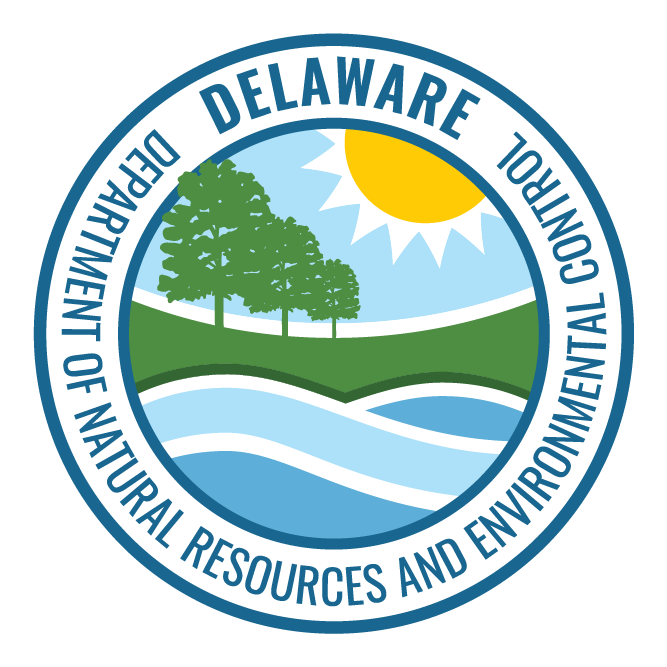Pages Tagged With: "wildlife"
A Guide for Shoreline Residents
Residents living along Delaware’s public fishing ponds and lakes play an important role in the stewardship of the public fishing ponds and lakes managed by the DNREC Division of Fish and Wildlife. Waterside living offers peace, natural beauty, wildlife viewing and excellent angling opportunities. While enjoying these amenities, residents should keep in mind that theseWildlife Action Plan Citations
The following is a list of citations used in the 2025 Delaware Wildlife Action Plan. This list is also available as a downloadable PDF document. Abell, R. , et al. (2008). Freshwater ecoregions of the world: a new map of biogeographic units for freshwater biodiversity conservation. BioScience 58(5): 403-414. DOI: 10. (1641).Outreach: Partner and Public Input (Element 7 & 8)
Outreach for the 2025 DEWAP took multiple forms, including formal and informal meetings, workshops, surveys, outreach materials (e.g., presentations, news releases), websites, and social media, as well as personal contacts and correspondence. A dedicated DEWAP website and an email address were established to disseminate information to a wider-audience and receive public input throughout the process.Future DEWAP Review and Revision (Element 6)
The DEWAP will be periodically reviewed and revised according to the development and implementation timeframes of the Department of Natural Resources and Environmental Control – Division of Fish and Wildlife (DNREC DFW) and partners scheduled programs and updates (Element 6). This will be necessary as the monitoring components discussed in this chapter contribute to thePlanning Context
The DEWAP fits into an existing framework of statewide strategies established to conserve and protect the state’s natural resources, including habitat for wildlife. These strategies focus on different approaches to conservation (e.g., land acquisition, preservation, changes in land use, infrastructure investments, policy, etc.), but they are all coordinated and have shared mapping elements and commonDevelopment of Conservation Actions for the 2025 Revision
Conservation actions and research, survey, and monitoring needs were developed for the 2015 DEWAP based on a review of existing conservation and management plans and information provided by DNREC DFW staff and key partners and stakeholders during the DEWAP input process. These conservation programs and plans were identified through a literature search compiling current local,Identifying Issues Affecting Species of Greatest Conservation Need and Key Habitats in Delaware
Conservation issues, including threats or stressors, are human actions that adversely impact wildlife, native plants and natural communities, and the ecological processes that sustain them. Conservation actions are the measures taken to eliminate or minimize these impacts, or to mitigate their effects. While many Conservation Issues had their origins in the 2006 and 2015 DEWAPsHabitat Analysis for the 2025 DEWAP Revision
Habitat Classification The 2025 Wildlife Action Plan generally uses the same wildlife habitat classification scheme as the 2015 Wildlife Action Plan (DNREC DFW 2015). This classification includes all terrestrial and aquatic habitats. Terrestrial habitats and palustrine and estuarine wetland habitats were aligned as closely as possible with NatureServe EcologicalDelaware Hawk Watch
Hawk watch stations are critical in understanding long-term population trends of migratory raptors throughout the country. The DNREC Division of Fish and Wildlife partners with the Delaware Ornithological Society, the DNREC Division of Parks and Recreation and the Delaware Nature Society to operate two hawk watch stations in the state of Delaware.Needs
Need for Information and Planning Although not direct threats, gaps in information and lack of appropriate conservation planning are considered issues that call for important actions to address conservation of SGCN and key habitats. Lack of information on the distribution, status, and ecology of SGCN and key habitats is considered critical becauseClimate Change
Introduction and Regional Perspective Climate change is a major threat to fish and wildlife habitats, populations, and assemblages. Climate change affects ecosystems as distributions of animals and plants change, the timing of natural events is disrupted, and community compositions and structures are altered. Species and populations likely to have greater sensitivities toPollution
Urban wastewater includes stormwater runoff and sewage. Increases in stormwater occur concurrently with high levels of impervious surface and changes in land use associated with development. In older cities, including Wilmington, outdated, combined sewer and stormwater infrastructure can result in sewage flows into streams and rivers, and problems with sewage backup during flooding events. EffortsInvasive and Problematic Species and Diseases
The spread of invasive species poses a significant threat to SGCN throughout the Northeast. With Northeast Association of Fish and Wildlife Agencies (NEAFWA) funding through the Regional Conservation Needs (RCN) Grant Program, Klopfer (2012) identified 238 invasive species from 12 groups with a potential to adversely affect SGCN, while at the same time acknowledging thatNatural system modifications
Natural system modifications are defined as threats from actions that convert or degrade habitat in service of “managing” natural systems, often to improve human welfare (Salafsky et al. 2008). Fire Suppression One example of a natural system modification is the suppression of fire. Natural, lightning-causedBiological Resource Use
Hunting & collecting terrestrial animals This category includes threats from the consumptive use of biological resources, including deliberate and unintentional harvesting, as well as the persecution or control of specific species (Salafsky et al. 2008). This threat has been identified as an issue for many amphibian and reptile SGCN primarily due toTransportation-related Issues & Human Disturbance
Roads and other transportation corridors have profound effects on wildlife populations. They represent major sources of pollutant load, and they can be barriers to dispersal for many species, fragmenting habitat and leading to genetic isolation of local populations. The ecological effects of roads are described in several reviews (Trombulak and Frissell 2000), including some focusedEnergy Production
Offshore wind turbines.Photo: Andy Dingley / Wikipedia The Delaware Estuary is one of the nation’s largest petrochemical centers, and the potential for spills is an ever-present threat to estuarine and wetland systems and the SGCN that rely on them. The port complex of the Delaware River and Bay is the second largestAgriculture
Agriculture is an important part of Delaware’s history, culture and economy. Many Delaware farmers utilize Best Management Practices (BMPs) and are enrolled in Natural Resources Conservation Service (NRCS), Department of Agriculture (USDA), or U.S. Fish and Wildlife Service (USFWS) cost share programs that are environmentally friendly and minimize impacts to wildlife. Some agricultural practices, however,Residential and Commercial Development
Most Delaware SGCN depend, to some extent, on lands facing habitat loss and fragmentation from residential and commercial development. Delaware’s human population is predicted to increase by about 100,000 people between 2025 and 2050, resulting in increases in land development statewide (Delaware OSPC 2025). Land Development in theConservation Opportunity Areas
Guiding Conservation on the Ground in Delaware A goal of SWAPs is the development of COAs that map and prioritize opportunities for conservation of key habitats and SGCN. AFWA Best Practices (2012) recommend that WAPs identify and spatially depict priority areas on the landscape that offer the best opportunities and potential forStatewide Conservation Actions
In the process of identifying conservation actions for SGCN and their habitats, recurring patterns and priorities emerged that cross between taxonomic and ecological boundaries. These more general, statewide conservation actions were recognized to have broad impacts across taxa and habitats. These broader conservation actions address the primary statewide issues identified in Threats to SGCN andPlants
Plant Diversity of Delaware Grass Pink Orchid (Calopogon tuberosus).Photo: Gary Stolz / USFWS Delaware’s plant species play a key role in supporting wildlife diversity. Although Delaware is small in land area, over 2400 species and varieties of plants have been documentedInvertebrates
Invertebrate Diversity of Delaware Invertebrates account for an exceptionally large proportion of the biodiversity of Delaware. In Pennsylvania, where invertebrate species numbers have been quantified, Rawlins and Bier estimate that invertebrates make up 53.2% of the state’s species diversity, with plants, algae, fungi, and lichens accounting for 40%, and vertebrate animals onlyFish
Fish Diversity of Delaware Hickory shad (Alosa mediocris)Photo: Ryan Hagerty / USFWS At least one hundred and seventy-seven species of fish have been documented in Delaware waters. One hundred of these are considered SGCN in the state. NOAA estimates that 130 speciesAmphibians and Reptiles
Amphibian and Reptile Diversity of Delaware Evidence indicates worldwide declines in amphibian (Stuart et al. 2004) and reptile populations and a need to identify the specific causes and impacts of these declines is warranted (Gibbons et al. 2000; LaRoe et al. 1995). There is a recognized national and regional need for advocacyLandbirds
Landbird Diversity of Delaware Horned Lark.Photo: Richard Szlemp / USFWS While best known for its waterbird habitat, Delaware also provides critical habitat for landbirds. Important groups for which Delaware has particularly high regional responsibility include neotropical migrant songbirds that use the state for stopover habitat, migrating and wintering raptors,Conservation Actions
Addressing Threats through Conservation Actions Conservation Actions are the measures taken to eliminate, minimize, or mitigate the impacts of the issues facing Delaware’s Species of Greatest Conservation Need (SGCN) and their habitats. This chapter addresses Element 4 and presents the actions the Delaware Department of Natural Resources and Environmental Control, Division ofThreats to SGCN and Habitats
Introduction Delaware’s Species of Greatest Conservation Need (SGCN) and their habitats face numerous issues that may adversely affect them and compromise their status in the state. Some issues are global or national in scale, while others may be regional, statewide, or local. Identifying issues affecting Delaware’s SGCN and habitats is an importantAmerican Barn Owl Monitoring and Management
The DNREC Division of Fish and Wildlife works with public and private landowners to study and conserve Delaware’s population of American Barn Owls.Contact Us
Jordan Brown Raptor, Grassland and Forest Bird Biologist 302-255-1960




